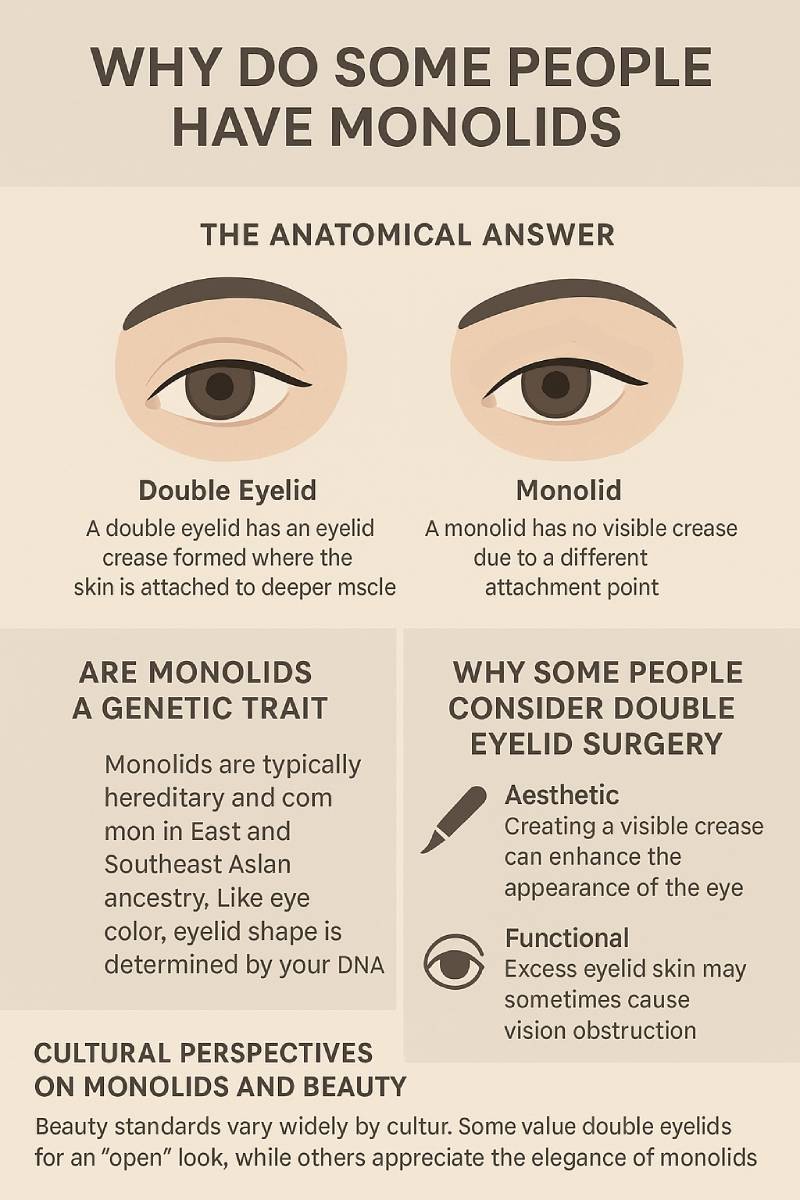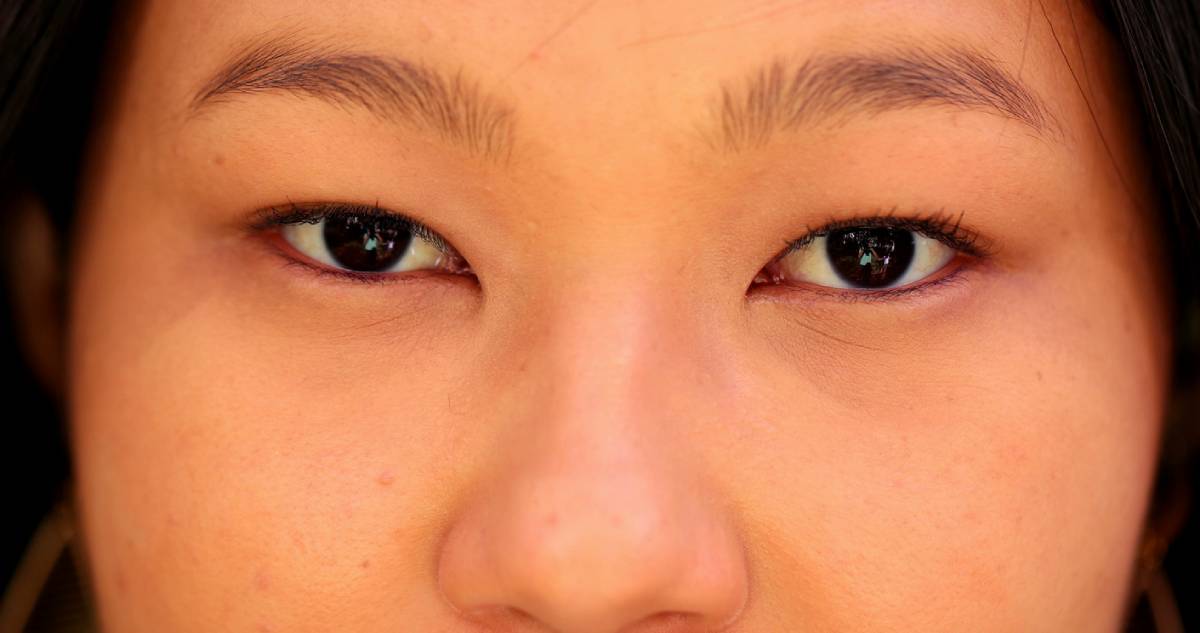Our eyes are every bit as unique as our fingerprints, featuring beautiful variations shaped by generations of ancestry, culture, and biology. One of these natural variations is the presence of monolids, a distinct eyelid shape characterized by the absence of a visible crease that separates the eyelid into two distinct parts.
But why do some people have monolids? While many people around the world possess this feature, particularly among East Asian populations, monolids are often misunderstood or overlooked in mainstream beauty conversations. That being said, whether you’re researching out of interest, considering double eyelid surgery, or simply want to learn more, understanding what influences monolids can provide you with greater clarity.
Why Do Some People Have Monolids? The Anatomical Answer
To understand why some people have monolids, it is helpful to examine the basics of eyelid anatomy. The presence or absence of an upper eyelid crease is largely determined by genetics and the way connective tissue attaches the skin to underlying structures.
In people with double eyelids, a fold is formed where the skin is tied to a deeper muscle, known as the levator aponeurosis. This attachment causes a visible crease when the eyes are open. In contrast, people with monolids have either a very shallow crease or no crease at all because the attachment point is different or less pronounced.
This anatomical variation is particularly prevalent in individuals of East and Southeast Asian ancestry, although it can be observed across a range of ethnicities. It’s simply a natural variation in eyelid structure—neither better nor worse than any other shape.
Are Monolids a Genetic Trait?

Yes, monolids are typically hereditary, meaning they are passed down from one generation to the next. Just like eye color or hair texture, eyelid shape is determined by your DNA. If both parents have monolids, it’s more likely their children will, too.
That said, eyelid creases can vary even from parent to child or among siblings. Some people have a partial or low crease that gives the appearance of a “hidden double eyelid,” while others have a more defined fold. Genetics sets the foundation, but age, skin elasticity, and even lifestyle factors can influence how that crease appears (or doesn’t).
Why Some People Consider Double Eyelid Surgery
While monolids are entirely natural and beautiful, some people choose to undergo double eyelid surgery to create or enhance a visible crease. Known medically as Asian blepharoplasty, this procedure is often chosen to open up the appearance of the eye, make makeup application easier, or achieve a certain aesthetic preference.
Aesthetic vs. Functional Motivations
While cosmetic reasons are common, some patients undergo the procedure to address functional issues, such as vision obstruction caused by excess upper eyelid skin. In either case, a board-certified eyelid surgeon like Dr. Joseph can help determine whether surgery is appropriate and design a result that enhances your natural beauty.
What to Expect from Double Eyelid Surgery
Double eyelid surgery is a highly precise procedure that requires a thorough understanding of eyelid anatomy, facial balance, and ethnic characteristics. The goal isn’t to Westernize the eye—it’s to create a crease that suits the individual’s features while respecting their heritage.
There are generally two main techniques:
- Incisional method: Ideal for individuals with thicker skin or excessive tissue. It creates a permanent crease by making a small incision in the eyelid.
- Non-incisional (suture) method: Uses sutures to create a crease without cutting the skin. This method is less invasive and has a quicker recovery time, but may not be suitable for all patients.
Dr. Joseph at OC Oculoplastic uses both approaches depending on the patient’s anatomy and goals. With years of experience in eyelid surgery, he crafts a plan that prioritizes natural results, minimal downtime, and patient comfort.
Cultural Perspectives on Monolids and Beauty
It’s important to note that the decision to undergo double eyelid surgery is deeply personal. Beauty standards vary significantly across cultures and time periods. In some societies, double eyelids are looked upon more favorably for their “open” appearance; in others, monolids are celebrated for their elegance and uniqueness.
Today, many people proudly embrace their monolids. Others explore cosmetic surgery as a form of self-expression, not self-erasure. What matters most is that the decision is informed, respectful, and aligned with your own sense of confidence and self-assurance.
Ready to Explore Your Options with an Expert Eyelid Surgeon?
If you’re curious about your eyelid anatomy or considering double eyelid surgery, schedule a consultation with Dr. Joseph at OC Oculoplastic. As an eyelid surgeon with a specialized focus on facial and eyelid procedures, Dr. Joseph offers compassionate care and customized results you can trust.
